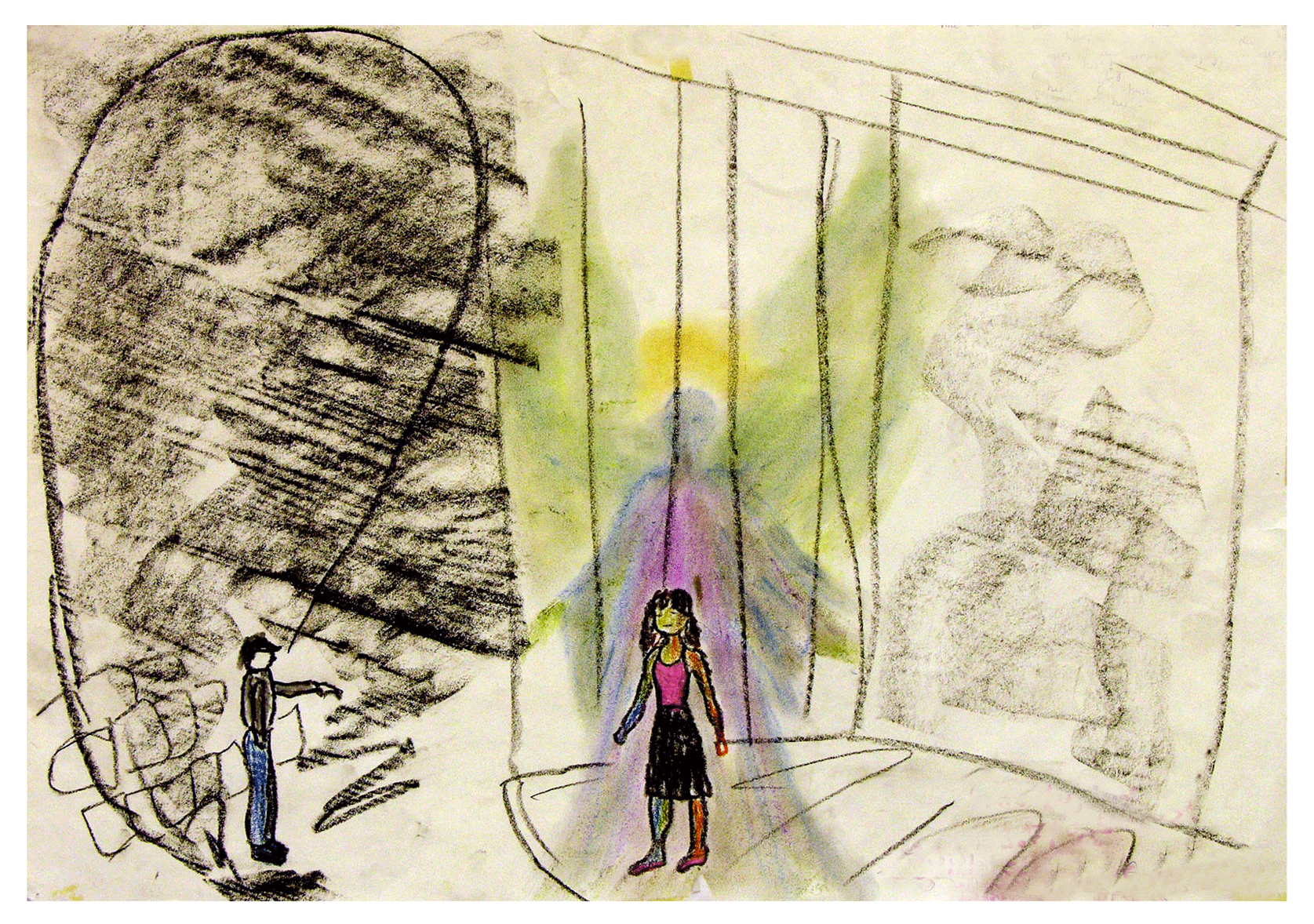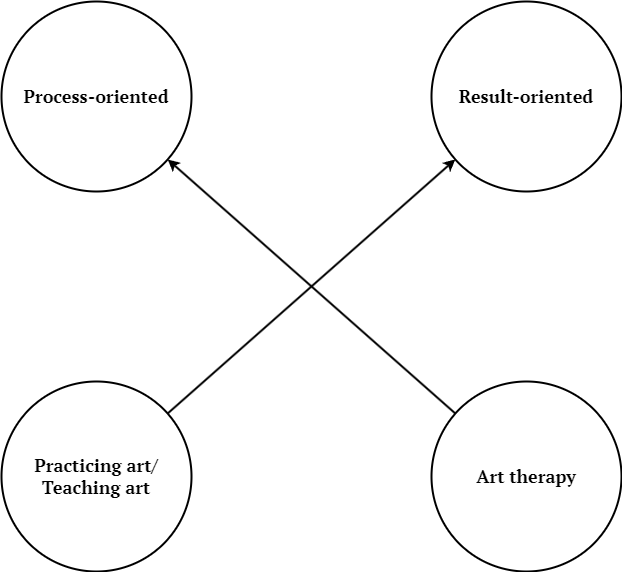Art therapy – another way of thinking

My professional life started with an education at one of the three Danish Colleges of Acting, the Odense Theater Drama School (Danish: Odense Teaters Elevskole). Before this, I had throughout my teens participated in a semi-professional youth choir: the Danish National Girls Choir (Danish: Danmarks Radios Pigekor). My relationship to art and the use of artistic means of expression at the time was quite forcibly influenced by the effects of these artistic surroundings, with suppositions such as: art is difficult, and should be exercised virtuously, there are only a few chosen ones who have true talent – and therefore – the right to practice it. It took me years to figure out that the world does not necessarily work in this way.
I then went on to work as a professional artist for about 15 years of my adult life. First, I worked as an actress at the Odense Theatre in Denmark, and subsequently as a solo vocalist in the Nordic countries. Alongside my work, I went into personal psychotherapy, and started my education as a psychotherapist with an art therapeutic specialization. This was to change my life, not only privately and professionally, but also in relation to everything I had learnt about art. In this – for me – novel context, art in itself was not important, and there was no mention of “Art for art’s sake”. Within art therapy, the means of artistic expression were only used as tools for the psychotherapy, the individual’s process to becoming more self-aware.
Initially, this was very confusing to me. I had learnt that art was almost holy and that it was something to be approached with great respect and humility. As the education went on, I saw how well this divergent way of thinking and practicing worked. Using the means of artistic expression in such a process-oriented fashion was diametrically opposed to what I had previously learnt and practiced as a professional artist. Yet, I soon found what great possibilities this way of working gave to anybody to be able to discover more about themselves and their own resources. The other course-participants came from a background within caring and nursing, which caused them to have to get back to basics for each of the means of artistic expression covered. As an art therapist you namely have to know your craft, to be able to use the tools yourself. To me, the hardest part was the novel and very different way of thinking when it came to practicing art: two diametrically opposed ways of utilizing the means of artistic expression.
Two opposing ways of using the means of artistic expression
In currently also teaching singing and drama, and partially using the means of artistic expression in my everyday work with clients within psychotherapy or supervision, I have spent a substantial period of time reflecting on the differences between the ways of using these means. These thoughts form the basis of the following model:

Deliberately created art
In my point of view, art consists of objects, artifacts or immediate situations that one or more people deliberately create. Creating art is often entirely or at least partially result oriented. Often, the overarching aim of art is that the viewer should perceive an artistic value in the work, i.e. should in one way or another be touched by experiencing the work of art.
Teaching art is as result oriented as deliberately creating art. Within teaching, the joint goal of the student and the teacher is that the student should constantly improve in practicing the art form of choice. That is not to say that the student should not develop personally at the same time. It is the intended and desirable outcome of the teaching that people creating art or learning to, should preferably be influenced by the work itself to such a degree as to start having their personal process be characterized by the work. And as long as it concerns a pedagogical process, the art teacher should be prepared for, educated in and capable of supporting the student in his or her personal process as well. The focus should, however, remain on the development of the student’s skills in creating art within the art form chosen to excel in, not the student’s personal process.
Text and illustrations: Tine Sylvest
Photographs: Bo Mellberg
The author is a certified Psychotherapist, Art Therapist and Workplace Counselor/Coach born in Denmark, currently living and practicing in the Swedish-speaking parts of Finland.
Next page : Art therapy as a method
